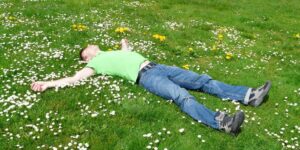Read time 4 minutes
This blog is another opportunity to feel grateful. Thank you, dear Universe, for blessing me with recovery and health.
It’s said that no Recovery Method could replace or cover up for poor diet and lack of rest.
Rest can look different for every individual. It could be active or passive in nature. It could include even recreational activities from being out for a walk-in open field or reading a favourite piece by an author. The aim is to increase mental and physical wellness.

Ever thought about why doctors insist on getting enough rest and sleep during hospitalizations?
Rest is not only essential to treating diseases; they’re also necessary to promote recovery and healing. The concept of resting during illness considers putting the patient at the centre to support his process of well-being.
Life for sure is full of surprises. I remember how I refrained from getting admitted to a hospital. Though it all sounded safe, I knew it was not a good place to be. Yet after excruciating symptoms, I had no alternative except to get hospitalized.
After all the necessary clinical findings in 2016, I was diagnosed with a rare disease called Isaacs’ Syndrome. Isaacs’ is a neuromuscular health condition that stems from muscle hyperactivity. In the process, I also discovered that I had Lyme disease. Lyme is a bacterial illness that gets transmitted through ticks.
Glaucoma also accompanied me. Glaucoma is an eye-related disease that damages the optic nerves. And Membranous Glomerulonephritis is a progressive kidney disease. I faced tremendous issues with my gut, stomach acid, and digestive enzymes. During my journey, I also developed Irritable Bowel Syndrome (IBS), Diabetes, Frozen Shoulder, Eczema and Blood Pressure.
Being a patient isn’t easy, nor are frequent hospitalizations. It’s for this reason I chose to share my experience.
The very nature of a hospital was making rest especially challenging. Hospitals are open 24 hours a day which means a lot of distraction all day and night. They are full of noise. So, whenever I tried a nap, I overheard the beeps of monitors and other medical equipment. The staff members were loud, and those elevators chimed. I realized that it involved a lot of patience and controlling horses than I’d anticipated. It had a lot to do with conserving energies that I otherwise used for thinking, texting, talking, etc.
I was under tremendous physical and psychological pain, dealing with a dictated daily dose of 42 pills. It was like forcing myself, following a protocol to rest up for health.
Yet, I tried some simple solution-driven ways to limit interventions and avoid disrupting my rest:
- To curb the Surrounding Noise: Generally, it is quite evident that when the body and mind are tired everything unpleasant seems more annoying. So, I tried using cotton to my ears as a solution to protect myself against high-frequency sound.
- Oral vs IV Medicines: I was given antibiotics and other pills for my breathing issue in the middle of the night. As a solution, the oral form of medicines replaced Intravenous drip.
- Monitoring my Vital Stats: It was instructed to keep a record of blood pressure and pulse every four hours. As a solution, the last clinical recordings for the day were pre-recorded at 10:30 instead of 11:30 p.m.
- Temperature control adjustments: A comfortable room temperature could impact the quality of sleep. As a solution, a comfortable room temperature was maintained to stick to a consistent sleep efficiency.
- Wearing comfortable Clothes: I preferred my own casual night dress instead of the breezy hospital gown which made me feel at ease. It supported the progress and flow of my sleep cycle.
- No to visitors: For the initial days of hospitalization, I refrained from meeting any outsiders. It helped me maintain my peace of mind and unnecessary distractions.
- Many solutions are common sense: I requested closed blinds, dimmed lights, and limited intervention unless required.
As Care, the diagnostic procedures and medical tests
The diagnostic procedures weren’t easy as they consumed time waiting in long queues. The waiting time is an inherent trait. Post-diagnosis, I was prescribed a long list of medical and clinical tests. The tests included EMG, PET scan, MRI, lumbar spine ultrasonography, kidney biopsy, and antibody tests. It also included extensive therapies that were used for evaluation, diagnosis, monitoring, and determining the course of treatment.
As a solution, I was accompanied by a note from the doctor to avoid long waiting queues which eased the process. Medical tests for which I had to leave my room were avoided on days when the footfall of outside patients was more. Also, an attendant accompanied me with the necessary instructions.
It has been proven that our body heals faster when at rest as the pituitary glands are known to release certain growth hormones. These hormones help the muscles to repair faster.
Many a time, the benefits of rest may be underrepresented yet is of immense value attached to one’s recovery. Hospitals and medical experts could make an attempt to have a more patient-centric approach to the benefit of medical care.
These initiatives helped me find the environment of hospitals more conducive to care. My perspective towards it changed from an isolated patient care space to a caring recovery unit.
DISCLAIMER
The views expressed above in this article are the author’s own and do not represent any kind of medical advice.


